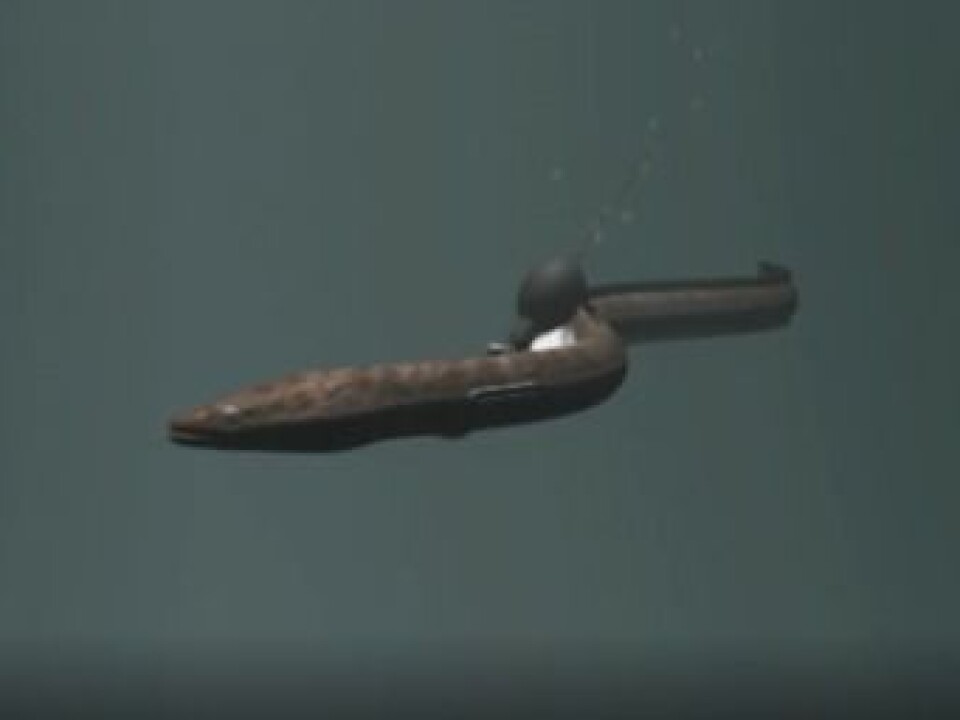
A mystery of secret eel migration solved
A team of scientists have mapped the eels’ 5,000 kilometre long journey, but the study leaves even more questions about how eels migrate from Europe to the Sargasso Sea.
In 1913, the Danish marine scientist Johannes Schmidt set out to find the eel’s spawning ground. He found it 5,000 kilometres from Europe’s west coast in the Sargasso Sea.
Ever since, the eels’ long journey has been shrouded in mystery. How do they find their way? What route do they take? How do they behave? And can they really traverse 5,000 kilometres in the few months between European Autumn and the time at which they reach the main spawning ground in the middle of February?
A team of European scientists have come a little closer to answering these questions by mounting specially designed equipment onto eels to track their mysterious journey.
Read More: Eels can escape the Mediterranean Sea
The slow eel

The common perception for many years was that eels leave Europe in autumn and arrive in the Sargasso Sea in spring, ready to spawn. This is based on the fact that eels leave Europe between October and December, and that their spawning period is typically between February and April.
But eels are just too slow for this to be true.
The scientists behind the new study attached transmitters to more than 700 eels to track their migration from Europe to the Sargasso Sea. They managed to obtain data from 200 of these transmitters and mapped the eels’ route.
Their data show that most eels take more than the expected four to six months to complete the journey. So that is one mystery solved. But the study left even more questions for the scientists to answer. Why do eels take up to a year to reach the Sargasso? When do the last ones arrive? And do they have the strength to spawn after a one year-long journey?
“We know their departure point and their spawning period, but with the new data we can see that they travel too slowly. With the existing knowledge about the length of the journey and the new knowledge about their cruising speed, we can see that a large number of eels won’t reach [the Sargasso] until the next spawning season,” says co-author Kim Aarestrup from the Technical University of Denmark (DTU), National Institute of Aquatic Resources.
The results are published in journal Science Advances.
Navigation and ice-cold water
One reason why the eels take so much longer than expected to reach the spawning ground is that they take an indirect route.
Mapping their journey revealed that the eels do not choose the most direct route, instead choosing to travel via the Azores.
This raises another question about how the eels navigate.
“Their route indicates that they use a type of stimuli to find their way, while it would’ve been more difficult to explain the direct route,” says Aarestrup.
“They swim against the main ocean currents, so they probably either use their sense of smell and / or magnetism to identify the Sargasso Sea. But it makes the route longer,” he says.
This may also explain why the eels do not reach the spawning ground until the following spring.
Another explanation could be that the eels are trying not to get themselves eaten by fish and whales en-route to the Sargasso.
The scientists could only track the eels half way along their journey, so a part of the trip still remains a mystery, including how many eels actually arrive.
Read More: Scientists solve the riddle of eel evolution
Eel researcher impressed with study
Professor Michael Møller Hansen from the Department of Biology at Aarhus University, Denmark, is impressed with the study. Hansen was not involved in the study, but has studied eel larvae in the Sargasso Sea.
“My first thought was that they’ve based their study on an impressive amount of data. I think it’s very convincing,” says Hansen.
He is especially impressed that the study challenges current opinions on the mysterious animal.
“They present a range of results that don’t really fit with our current knowledge and perhaps preconceived ideas of eels. So I think that it’s an important article,” he says.
Read More: Copenhagen invaded by research fleet
Understand the mysteries of the eels’ journey in two minutes. (Video: David Righton)
-----------------
Read the full version of this story in Danish on Videnskab.dk
Translated by: Catherine Jex




